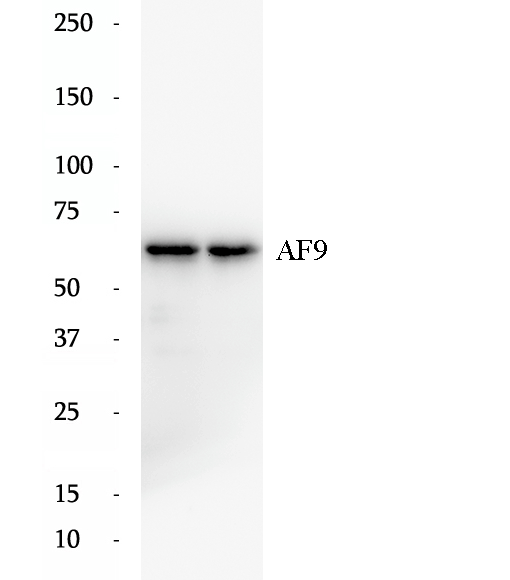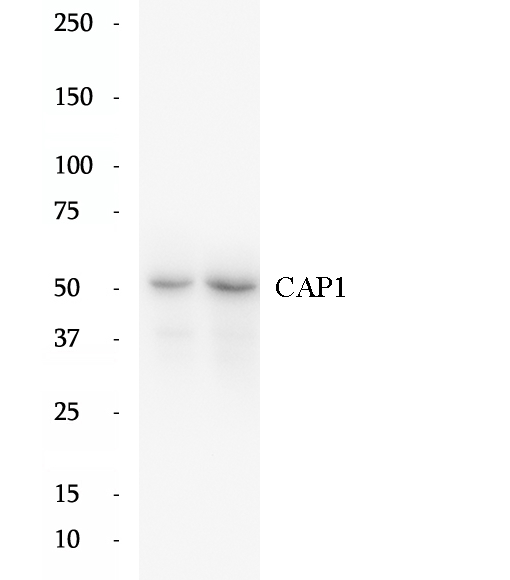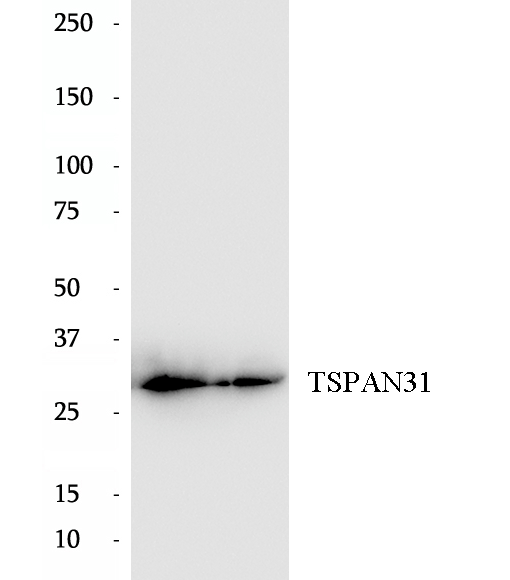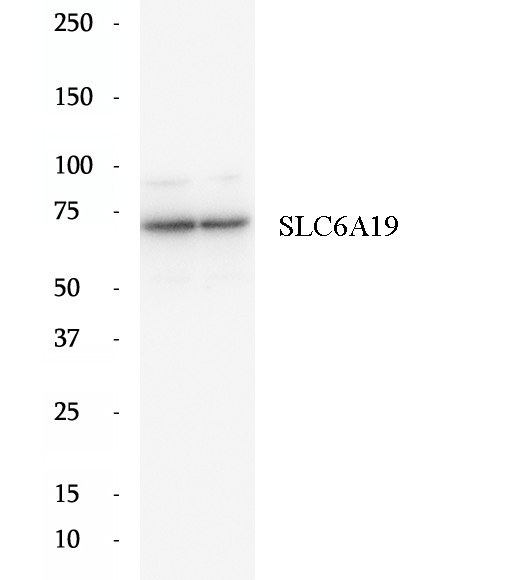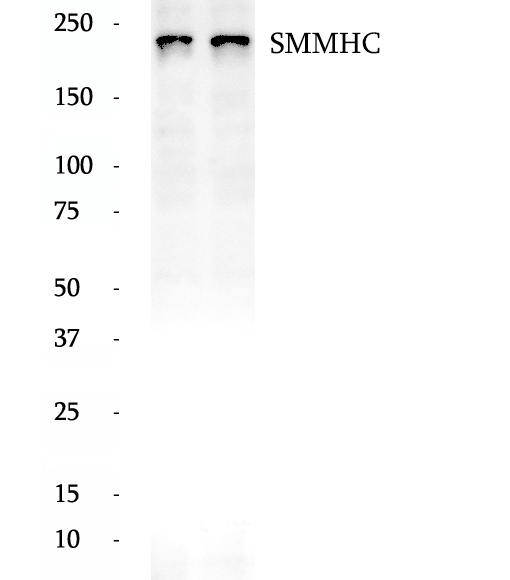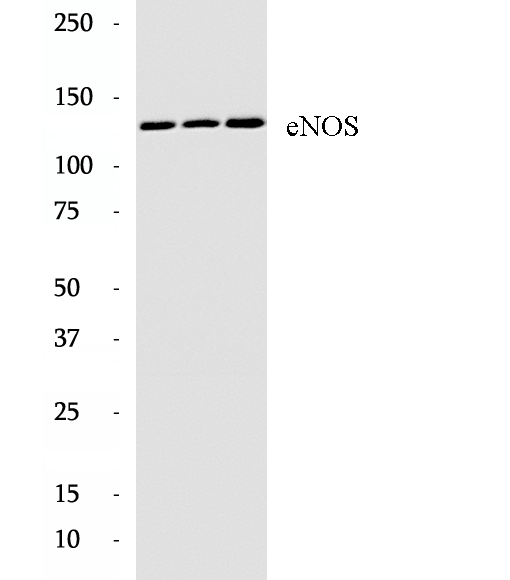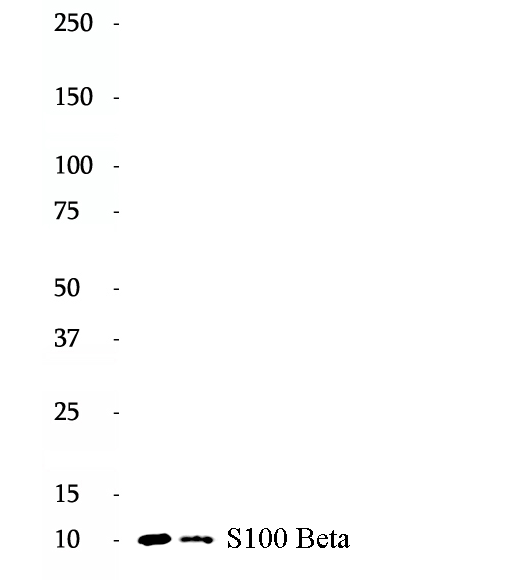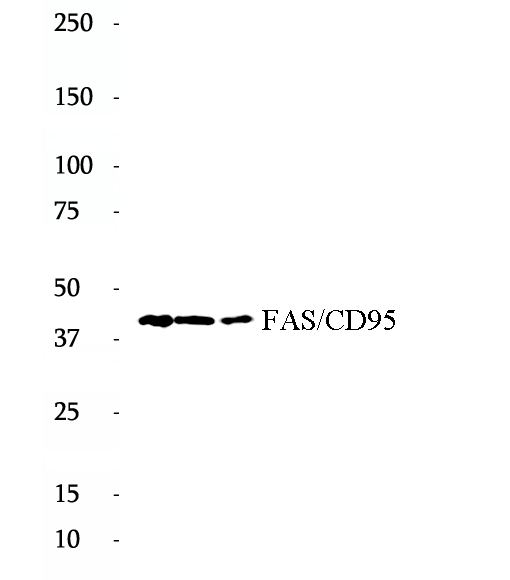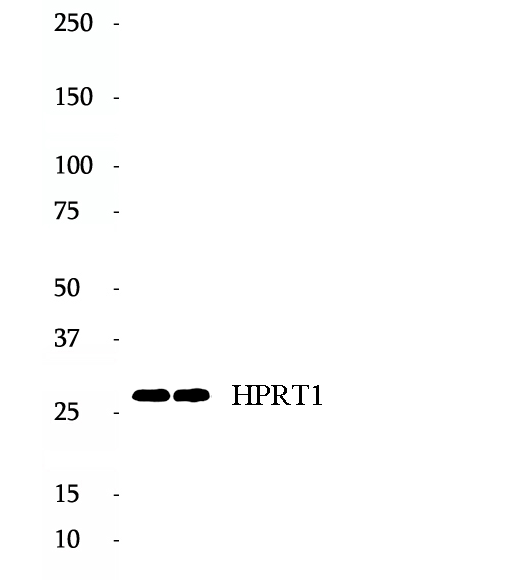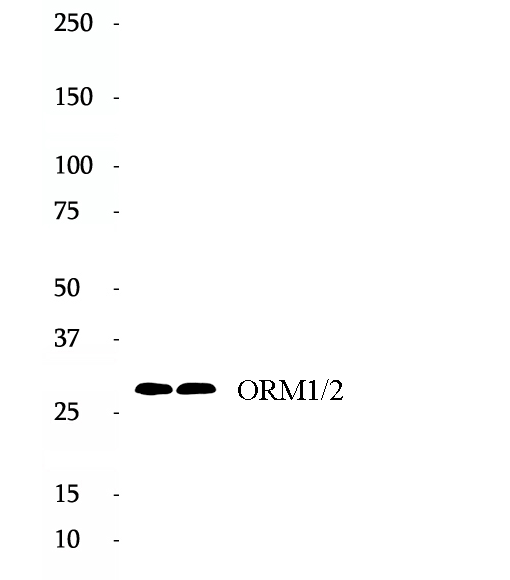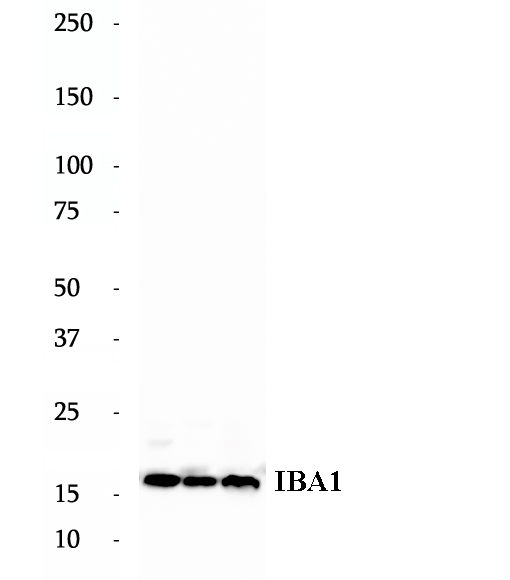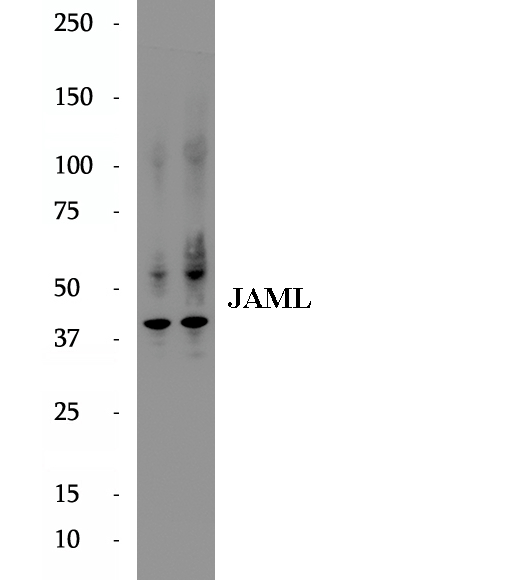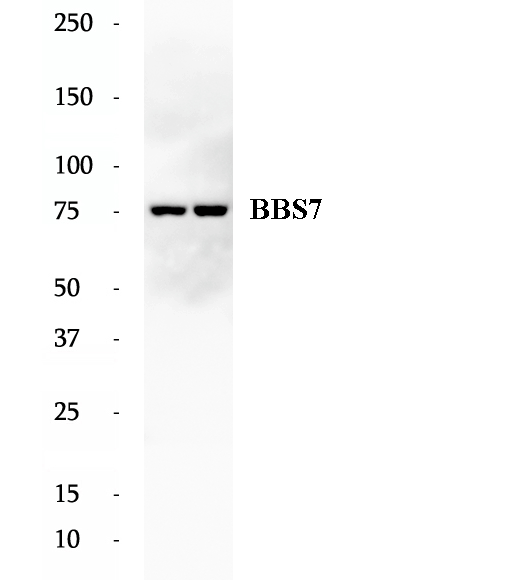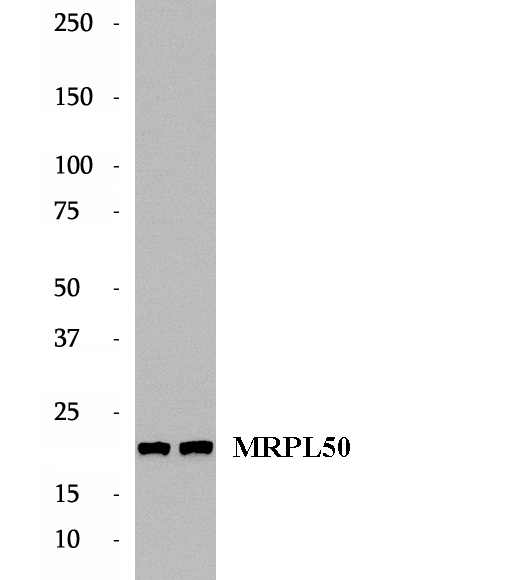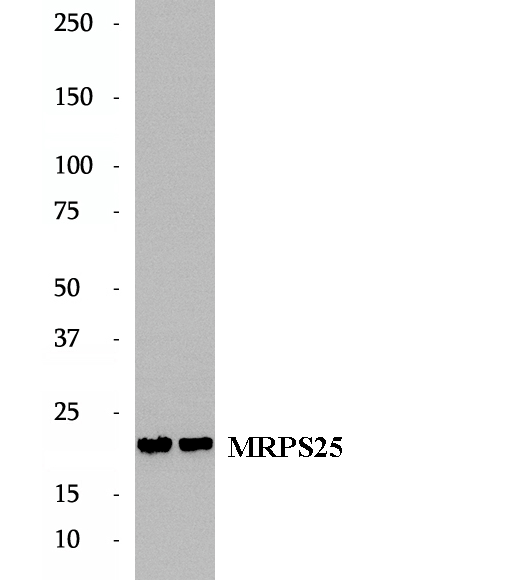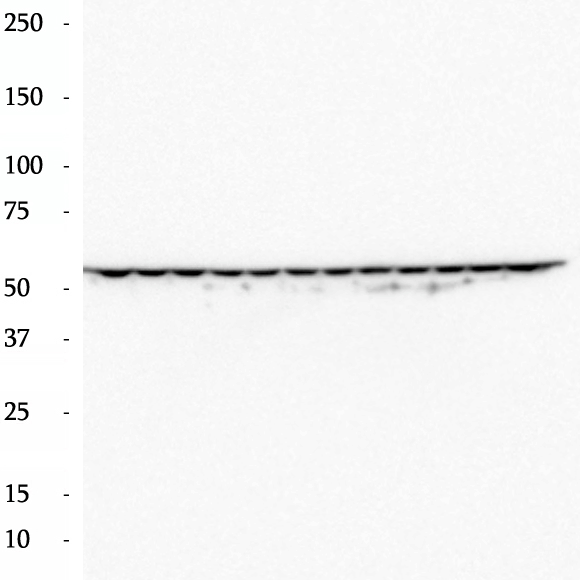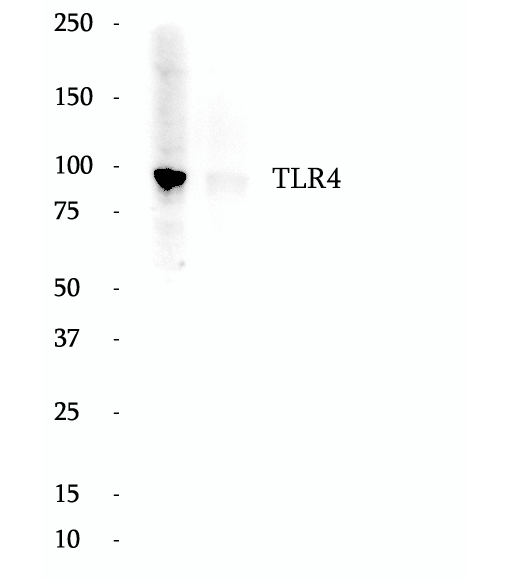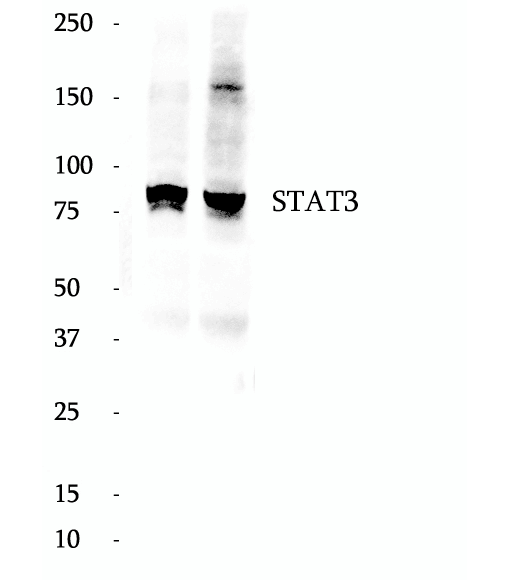|
BP60089
|
Anti-AF9 antibody
|
|
|
|
|
MLLT3, also named as AF9, YEATS3, is a 568 amino acid protein, which is a component of the superelongation complex6 and co-operates with DOT1L, which di/trimethylates H3K79 to promote transcription. MLLT3 localizes to active transcription start sites (TSSs) through the YEATS domain, which recognizes active histone marks such as H3K9 acetylation and crotonylation. A truncated MLLT3 that lacks the YEATS domain forms a leukaemic fusion protein with the N terminus of MLL1, which misdirects MLLT3-interacting complexes to induce aberrant gene transcription. MLLT3 also regulates erythroid or megakaryocytic progenitors and was identified as a definitive HSC hub gene during mouse development. Researcher found that the expression of a gene called MLLT3 was closely correlated with blood stem cells'potential to self-renew and that the protein generated by the MLLT3 gene provides blood stem cells with the instructions necessary to maintain its ability to self-renew. It does this by working with other regulatory proteins to keep important parts of the blood stem cell's machinery operational as the cells divide.
|
|
BP60650
|
Anti-CAP1 antibody
|
|
|
|
|
CAP1, also known as CAP, CAP1-PEN, belongs to the CAP family and contains 1 C-CAP/cofactor C-like domain. CAP1 binds to monomeric actin and regulates the actin cytoskeleton to control cell size, adhesion, and migration. CAP1 also functions as a receptor for inflammatory cytokine resistin. CAP1 is an abundant and ubiquitously expressed protein. Western blot analysis detected CAP1 at an apparent molecular mass of 52 kDa.
|
|
BP65052
|
Anti-TSPAN31 antibody
|
|
|
|
|
Tetraspanin-31 (TSPAN31) belongs to the tetraspanin (TM4SF) family, also known as the transmembrane 4 (TM4) superfamily, which are a family of transmembrane proteins with 33 mammalian members. These proteins mediate signal transduction events that play a role in the regulation of cell development, activation, growth and motility. Tetraspanin-31 is thought to be involved in growth-related cellular processes. The experimentally determined molecular mass of 30 kDa is larger than the calculated molecular mass of 23 kDa, which could be a result of post-translational modifications.
|
|
BP63173
|
Anti-NLN antibody
|
|
|
|
|
NLN (Neurolysin, mitochondrial) is also named as AGTBP, KIAA1226 and belongs to the peptidase M3 family. It is an enzyme involved in the metabolic inactivation of bioactive peptides and functions as a monomer of molecular mass 78 kDa. It also can be dected the molecular weight between 70 kDa and 85 kDa according to the reports. The full length protein has a transit peptide with 37 amino acids.
|
|
BP64473
|
Anti-SLC6A19 antibody
|
|
|
|
|
SLC6A19, also named as B0AT1, encodes system B (0) transmembrane protein that mediates epithelial resorption of neutral amino acids across the apical membrane in kidney and intestine. The protein contains 634 amino acids and has 12 predicted transmembrane regions with highly expression in human kidney and small intestine and minimal in pancreas. The expression of SLC6A19 in intestinal cells depends on angiotensin converting enzyme 2 which is the cellular receptor for SARS-CoV-2. Mutations in SLC6A19 cause Hartnup disease.
|
|
BP64503
|
Anti-SMMHC antibody
|
|
|
|
|
SMMHC (smooth muscle myosin heavy chain; MYH11) is a contractile protein of smooth muscle cells. It is specifically expressed in cells derived from smooth muscle lineages. SMMHC is used as vascular smooth muscle cell (vSMC) contractile marker. It is also an excellent marker for myoepithelial cells, with no or few cross-reaction with myofibroblasts, thus very useful in the evaluation of stromal invasion.
|
|
BP61538
|
Anti-eNOS antibody
|
|
|
|
|
Endothelial NOS (eNOS), also known as nitric oxide synthase 3 (NOS3), has a protective function in the cardiovascular system, which is attributed to NO production. NOS3 has 3 isoforms of 68, 69, 133 kDa. Polymorphisms in NOS3 gene affects the susceptibility to several diseases such as hypertension, preeclampsia, diabetes mellitus, obesity, erectile dysfunction, and migraine.
|
|
BP64246
|
Anti-S100 Beta antibody
|
|
|
|
|
S100B belongs to the EF-band calcium binding proteins and is found primarily in astrocytes in the central nervous system (CNS). S100B has a variety of functions, including calcium homeostasis, cell proliferation, differentiation, migration, and survival, as well as neurite outgrowth and regeneration.
|
|
BP61668
|
Anti-FAS/CD95 antibody
|
|
|
|
|
Fas (CD95/APO-1) is a transmembrane glycoprotein belonging to the tumor necrosis factor (TNF) receptor superfamily. It can mediate apoptosis by ligation with an agonistic anti-Fas antibody or Fas ligand. Stimulation of Fas results in the aggregation of its intracellular death domains, leading to the formation of the death-inducing signaling complex (DISC). FAS-mediated apoptosis may have a role in the induction of peripheral tolerance, in the antigen-stimulated suicide of mature T-cells, or both. The molecular mass of native Fas is 38 kDa, the high molecular weight form (40-55 kDa) of Fas is due to glycosylation.
|
|
BP62223
|
Anti-HPRT1 antibody
|
|
|
|
|
HPRT1, also named as HGPRT, plays a central role in the generation of purine nucleotides through the purine salvage pathway. Mutation of HPRT1 is associated with Lesch-Nyhan syndrome (LNS) which is an X-linked inherited neurogenetic disorder of purine metabolism. It has been reported that HPRT1 also plays an important role in HPRT-related gout.
|
|
BP63324
|
Anti-ORM1/2 antibody
|
|
|
|
|
ORM2, also named as AGP2 and OMD 2, belongs to the calycin superfamily and Lipocalin family. It functions as transport protein in the blood stream. ORM2 binds various hydrophobic ligands in the interior of its beta-barrel domain. It also binds synthetic drugs and influences their distribution and availability. ORM2 appears to function in modulating the activity of the immune system during the acute-phase reaction. ORM2 is one of the conserved endoplasmic reticulum membrane proteins which regulating lipid homeostasis and protein quality control. This antibody can recognize both ORM1 and ORM2.
|
|
BP62278
|
Anti-Rabbit IBA1 antibody
|
|
|
|
|
Ionized calcium-binding adaptor molecule 1 (IBA1), also known as Allograft inflammatory factor-1 (AIF-1), is an inflammation-responsive scaffold protein expressed and secreted from macrophages. Microglia response factor (MRF-1) and daintain are also similar, and likely identical, proteins. IBA1 is necessary for macrophage survival, and it is also a key molecule in proinflammatory activity. IBA1 is a cytoplasmic protein, often expressed in immunocytes, macrophages, and microglia. It can be used as a marker for normal microglia in brain tissue, as IBA1 is expressed by all microglial cell subpopulations.
|
|
BP62440
|
Anti-JAML antibody
|
|
|
|
|
Junctional adhesion molecules (JAM-A, JAM-B, and JAM-C) are endothelial and epithelial adhesion molecules involved in the recruitment of circulating leukocytes to inflammatory sites. The full-length human JAML protein has a calculated molecular weight of 44 kDa. This antibody raised against 40-275 aa of human JAML protein detects bands with molecular wight of 44 kDa, and 50-70 kDa which probably represent different glycoforms of the protein.
|
|
BP60219
|
Anti-Annexin A7 antibody
|
|
|
|
|
Annexin A7 (Anx7) belongs to a ubiquitous and relatively abundant family of Ca2+-dependent membrane-binding proteins, which are thought to be involved in multiple aspects of cell biology including membrane trafficking, mediation of cell-matrix interactions and membrane organization within cells. Anx7, migrated as a 50 kDa protein in SDS-PAGE, has been proposed to function in the fusion of vesicles, acting as a Ca++ channel and as Ca++ -activated GTPase, thus inducing Ca++/GTP-dependent secretory events.
|
|
BP60441
|
Anti-BBS7 antibody
|
|
|
|
|
BBS7, also named as BBS2L1, is a component of the BBSome complex which is required for ciliogenesis but is dispensable for centriolar satellite function. BBS7 is mediated in part by the Rab8 GDP/GTP exchange factor, which localizes to the basal body and contacts the BBSome.
|
|
BP62924
|
Anti-MRPL50 antibody
|
|
|
|
|
MRPL50, also named as L50mt, is a mitochondrial protein with MW 18 kDa.
|
|
BP62930
|
Anti-MRPS25 antibody
|
|
|
|
|
Mitochondrial ribosomal protein S25 (MRPS25) belongs to the ribosomal protein S25/L51 family. It is a component of the mitochondrial ribosome small subunit (28S). The variant segregated with the disease and substitutes a highly conserved proline residue with leucine (p.P72L) that, based on the high-resolution structure of the 28S ribosome, is predicted to compromise inter-protein contacts and destabilize the small subunit.
|
|
BP69323
|
HRP Anti-Alpha Tubulin antibody
|
|
|
|
|
Tubulin in molecular biology can refer either to the tubulin protein superfamily of globular proteins, or one of the member proteins of that superfamily. α- and β-tubulins polymerize into microtubules, a major component of the eukaryotic cytoskeleton. Microtubules function in many essential cellular processes, including mitosis. Tubulin-binding drugs kill cancerous cells by inhibiting microtubule dynamics, which are required for DNA segregation and therefore cell division.
|
|
BP64876
|
Anti-TLR4 antibody
|
|
|
|
|
TLR4, also named as CD284, belongs to the Toll-like receptor family. TLR4 interacts with LY96 and CD14 to mediate the innate immune response to bacterial lipopolysaccharide (LPS). TLR4 acts via MYD88, TIRAP and TRAF6, leading to NF-kB activation, cytokine secretion and the inflammatory response. Three alternatively spliced transcript variants that encode different protein isoforms have been described. The calculated molecular weights of the three TLR4 isoforms are 96, 91, and 73 kDa.
|
|
BP64649
|
Anti-STAT3 antibody
|
|
|
|
|
Signal transducer and activator of transcription 3 (acute-phase response factor) (STAT3, synonyms: APRF, FLJ20882, MGC16063) is a member of the STAT protein family. In response to cytokines and growth factors, STAT family members are phosphorylated by the receptor associated kinases, and then form homo- or heterodimers that translocate to the cell nucleus where they act as transcription activators. STAT3 is activated through phosphorylation in response to various cytokines and growth factors including IFNs, EGF, IL5, IL6, HGF, LIF and BMP2. STAT3 mediates the expression of a variety of genes in response to cell stimuli, and thus plays a key role in many cellular processes such as cell growth and apoptosis. The small GTPase Rac1 has been shown to bind and regulate the activity of STAT3. This antibody is a rabbit polyclonal antibody raised against residues near the N terminus of human STAT3. STAT3 exists three isoforms and the molecular weight of each isoform respectively is 83 kDa, 87 kDa and 88 kDa.
|
